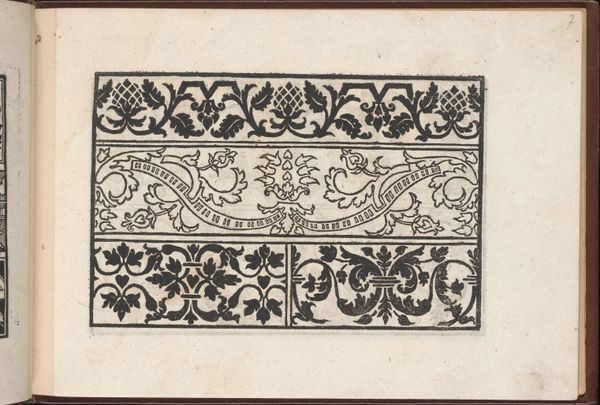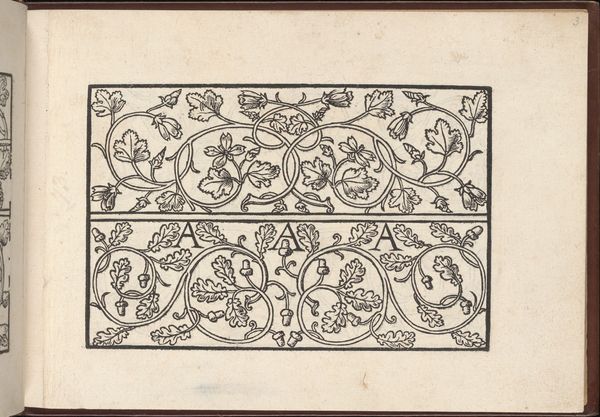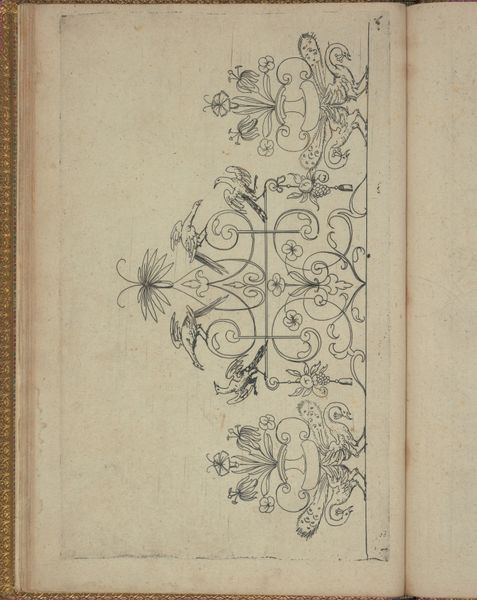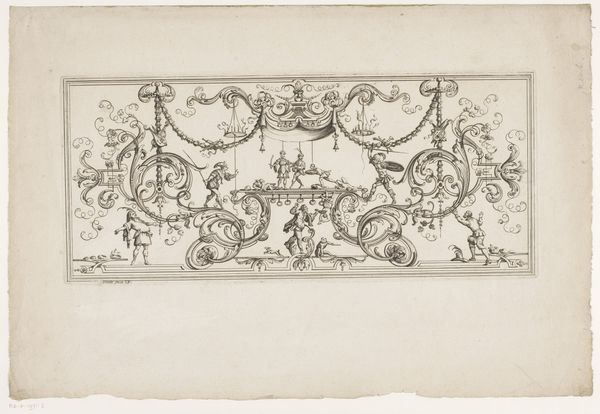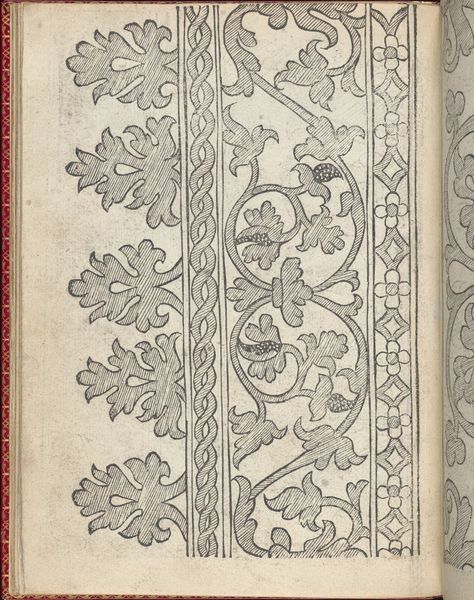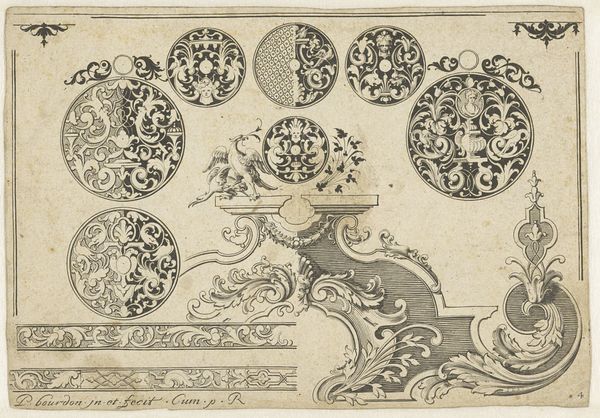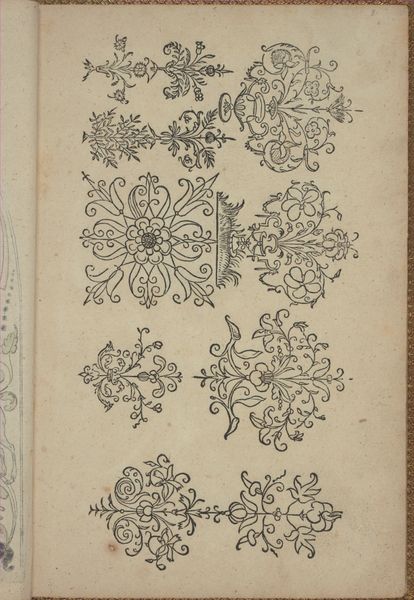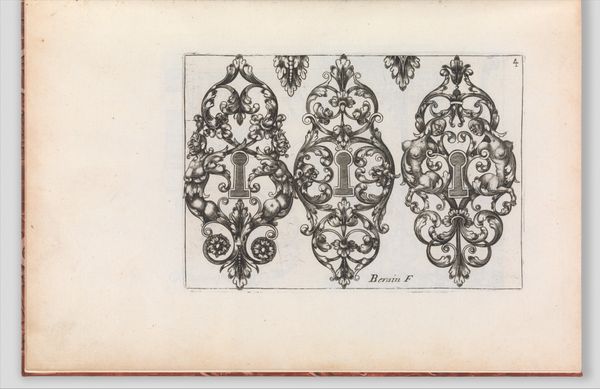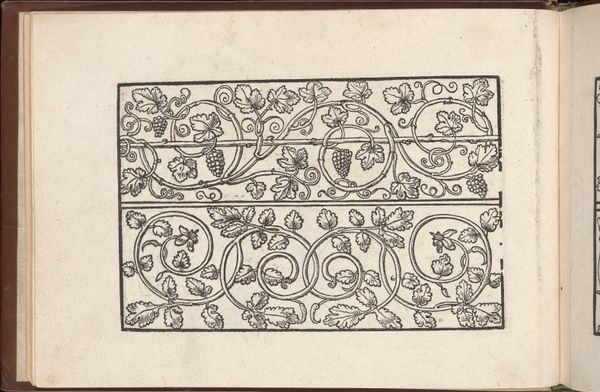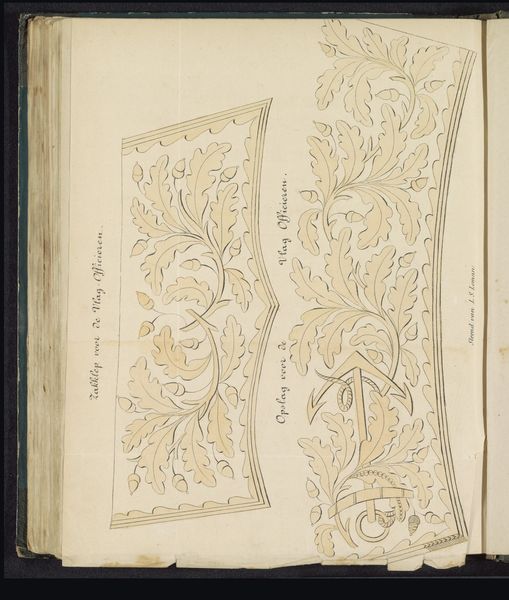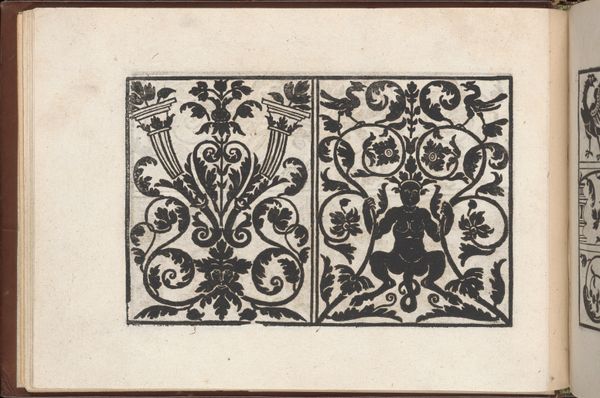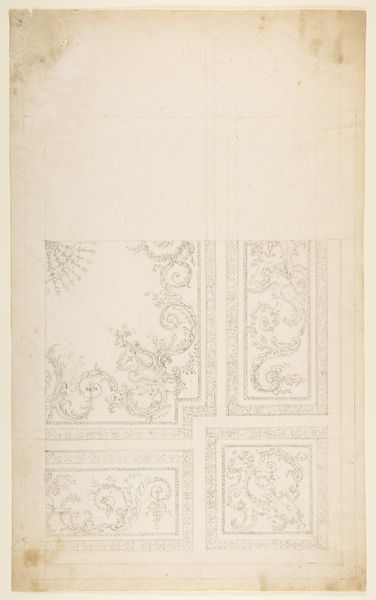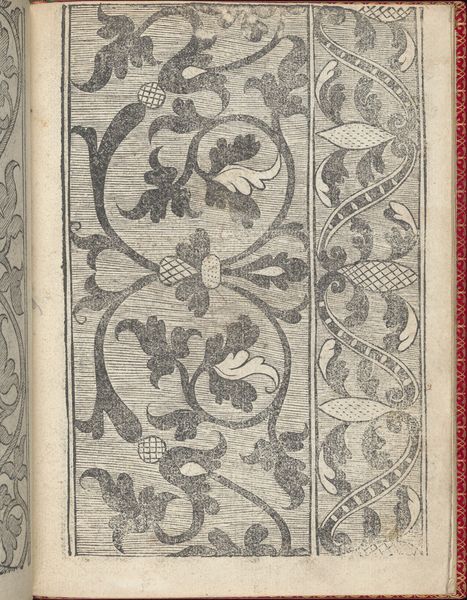
Design for a fountain and four square parterres for a pleasure garden 1651
0:00
0:00
drawing, print, engraving
#
drawing
#
garden
#
baroque
# print
#
landscape
#
engraving
Dimensions: Sheet: 19 1/8 × 15 1/2 in. (48.5 × 39.4 cm) Plate: 18 5/16 × 14 13/16 in. (46.5 × 37.7 cm) Album: 15 3/4 × 10 1/16 × 1 1/8 in. (40 × 25.5 × 2.9 cm)
Copyright: Public Domain
Editor: This is André Mollet's "Design for a fountain and four square parterres for a pleasure garden," made in 1651. It's a drawing, an engraving. Looking at it, I'm struck by the rigidity of the squares contrasting with the fluid, organic shapes inside. What catches your eye? Curator: It's a fascinating piece. What speaks to me most are the underlying power dynamics embedded within such seemingly decorative designs. Look closely at the symmetry, the order, the implied control over nature itself. Do you see any echoes of royal gardens and symbolic domination? Editor: Now that you mention it, yes, I see how the careful arrangement implies control and perhaps even ownership. Are there any specific symbols here that carry particular weight? Curator: Absolutely. The fountain, typically centrally located in such designs, becomes a locus of power. Water, life-giving, but contained, directed. The parterres themselves, those intricate beds, are miniature landscapes governed by human will. Even the swirling floral motifs can be read as tamed wilderness. How do you feel that plays into Baroque sensibilities? Editor: I think it is characteristic of the era's grandeur and an idealized view of nature shaped by humanity. But what about the drawing medium? Does that influence the image’s interpretation at all? Curator: Precisely. The print, readily reproducible, serves not just as a plan but also as a declaration. Disseminating ideals, normalizing aesthetic expectations linked with control and prestige. One must then wonder, what emotional response would such imagery have solicited in the viewer in the 17th century, and how it reverberates differently today. Editor: I hadn't considered the drawing as a means of distributing ideology, very interesting. Thinking about gardens as symbolic displays of power definitely changes how I see this! Thanks. Curator: Indeed. It is through recognizing such details and interrelations that the seemingly benign reveals its cultural significance.
Comments
No comments
Be the first to comment and join the conversation on the ultimate creative platform.
